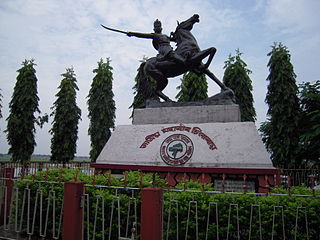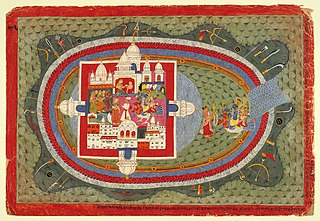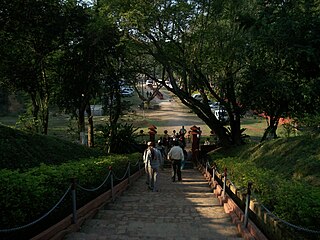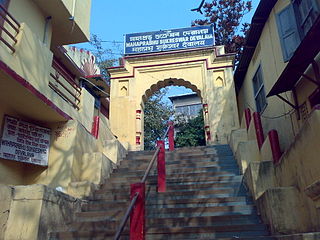This article includes a list of references, related reading or external links, but its sources remain unclear because it lacks inline citations .(March 2012) |
Timeline of the History of Assam , the important dates in its history against important events elsewhere.
| Year | Ancient Assam (350 - 1206) | Contemporaneous events | Date source |
|---|---|---|---|
| 350 | Pushyavarman establishes the Varman dynasty in Kamarupa | ( Barpujari 1990 :94) | |
| 636 | Xuanzang visits the court of Bhaskarvarman in Kamarupa. | ||
| 650 | Bhaskarvarman dies. End of Varman dynasty | ||
| 655 | Salasthamba establishes Mlechchha dynasty in Kamarupa | ||
| 900 | Brahmapala establishes Pala dynasty in Kamarupa | ||
| c1100 | Jayapala, the last Pala king removed by Ramapala of Pala empire | ||
| 1187 | Birpal establishes Chutiya kingdom at Swarnagiri | ||
| Year | Medieval Assam (1206–1826) | Contemporaneous events | Date source |
| 13th century | |||
| 1206 | The first Muslim invasion, Bakhtiar Khilji is thwarted and his army destroyed. Beginning of the medieval period in Assam | ||
| 1228 | Sukaphaa enters Assam | ( Gogoi 1968 :265) | |
| 1224 | Ratnadhwajpal the second Chutiya king annexes the Kingdoms of Bhadrasena and Nyayapal | ||
| 1228 | Chutiya kingdom expedition against Kamatapur | ||
| 1248 | Ratnadhwajpal establishes his capital at Sadiya | ||
| 1252 | Sukaphaa establishes capital at Charaideo | ( Gogoi 1968 :265) | |
| 1257 | Sandhya, a ruler of Kamarupa, moves his capital west and thus established the Kamata kingdom. | ||
| 14th century | |||
| 1362 | Sikandar Shah attacks Kamata kingdom and weakens the ruler Indranarayan[ citation needed ] | ||
| 1392 | Chutia king Satyanarayan's first land grant record in Habung. This is the first recorded land grant given to Brahmins in Upper Assam found till date. | ( Neog 1977 :816) | |
| 15th century | |||
| 1449 | Srimanta Sankardev is born | ||
| 1490 | First Ahom-Dimasa battle. Ahoms defeated under Konkhra and pursued for peace. | ||
| 1498 | Alauddin Hussain Shah of Gaur removes the last Khen ruler of Kamata kingdom | Vasco da Gama lands at Calicut | ( Barpujari 1992 :47) |
| 16th century | |||
| 1515 | Viswa Singha establishes Koch political power and Koch dynasty | ( Barpujari 1992 :70) | |
| 1520 | Ahoms defeated by Chutiya king Dharmadhwajpal | ||
| 1524 | Chutiya kingdom partially annexed to Ahom Kingdom under Suhungmung, and placed under the rule of Sadiyakhowa Gohain. | ( Gogoi 1968 :287) | |
| 1527 | Nusrat Shah's invasion, the first Muslim invasion of the Ahom kingdom, ends in failure. | ( Barpujari 1992 :133) | |
| 1532 | Turbak attacks Ahom Kingdom, the first commander to enjoy some success. | ||
| 1533 | Turbak defeated and killed. Ahoms pursue Gaur army to Karatoya river. | ||
| 1536 | Ahoms destroy Dimapur, the capital of the Kachari kingdom | ||
| 1540 | Nara Narayan succeeds his father to the throne of Kamata kingdom | ||
| 1563 | Chilarai occupies Ahom capital Garhgaon, end with Treaty of Majuli. | ( Barpujari 1992 :79–80) | |
| 1568 | Srimanta Sankardev dies | ||
| 1581 | Nara Narayana divides Kamata kingdom into Koch Bihar and Koch Hajo (to be governed by Raghudev) | ( Barpujari 1992 :94) | |
| 1587 | Naranarayana of Koch dynasty dies. | ( Barpujari 1992 :74) | |
| 1588 | Raghudev, son of Chilarai and ruler of Koch Hajo declares independence | ( Barpujari 1992 :95) | |
| 17th century | |||
| 1609 | Momai Tamuli Borbarua restructures Paik system in Ahom kingdom. | ||
| 1609 | Koch Bihar becomes a Mughal vassal | ( Barpujari 1992 :98) | |
| 1613 | Koch Hajo is annexed by the Mughal Empire | ( Barpujari 1992 :103) | |
| 1615 | Ahom-Mughal conflicts begin | ( Barpujari 1992 :148) | |
| 1637 | Bali Narayan dies of natural causes, and Koch rebellion again Mughals collapse | ( Barpujari 1992 :161) | |
| 1639 | Treaty of Asurar Ali signed between the Ahom kingdom and Mughal Empire | ( Barpujari 1992 :164) | |
| 1659 | Ahoms take possession of Koch Hajo (up to Sankosh river). Koch Hajo was occupied by rulers of Koch Bihar earlier, who drove out the Mughal faujdar from Guwahati | ( Barpujari 1992 :165) | |
| 1662 | Mir Jumla occupies Garhgaon, the Ahom capital | ( Barpujari 1992 :177–178) | |
| 1663 | After Treaty of Ghilajharighat Mir Jumla returns to Dhaka, dies on the way | ( Barpujari 1992 :188–189) | |
| 1667 | Ahoms wrest Guwahati and extend control up to Manas river; begins defence preparations | ( Barpujari 1992 :207) | |
| 1668 | Mughals under Ram Singh I advance up to Guwahati to retake it | ( Barpujari 1992 :211) | |
| 1671 | Ahoms win Battle of Saraighat and Ram Singh I retreats to Rangamati | ( Barpujari 1992 :227) | |
| 1679 | Laluksola Borphukan deserts Guwahati | ( Barpujari 1992 :245) | |
| 1681 | Gadadhar Singha becomes Ahom swargadeo | ( Barpujari 1992 :252) | |
| 1682 | Ahoms win Battle of Itakhuli. End of Ahom-Mughal conflicts with Ahom win | ( Barpujari 1992 :253–256) | |
| 18th century | |||
| 1714 | Rudra Singha dies, and with him dies the Kachari, Tiwa, Jaintia etc. grand alliance to remove the Mughals from Bengal | ( Gogoi 1968 :503–507) | |
| 1769 | First phase of Moamoria rebellion, Ahom capital falls but recaptured in April, 1770 | ||
| 1783 | Ahom capital Rangpur fell the second time to Moamoria rebellion. Rebel leaders strike coins in their names | ( Baruah 1993 :90) | |
| 1794 | Captain Thomas Welsh restores Rangpur to Ahom king from Moamora rebels | ( Baruah 1993 :133) | |
| 19th century | |||
| 1805 | Ahoms come to terms with Sarbananda, the last Moamora rebel leader holding out in Bengmara (Tinsukia). Ahoms declare Sarbananda the Barsenapati of Matak Rajya | ( Baruah 1993 :164) | |
| 1817 | The first Burmese invasion of Assam. Burmese occupation was complete by 1821 | ( Baruah 1993 :213) | |
| Year | Colonial Assam (1826–1947) | Contemporaneous events | Date source |
| 1826 | Treaty of Yandaboo signed between East India Company and King of Burma; end of Burmese and beginning of British occupation of Assam | ( Barpujari 1992 :363) | |
| 1861 | Phulaguri Dhawa, the first peasant uprising against British rule was repressed | ||
| 1894 | Patharughat raijmel fired upon, villagers tortured and property confiscated | ( Guha 1977 :53–54) | |
| Year | Post Colonial Assam (1947-) | Contemporaneous events | Date source |
| 1979 | Assam agitation begins | ||
| 1985 | Assam Accord signed. End of Assam agitation | ||















